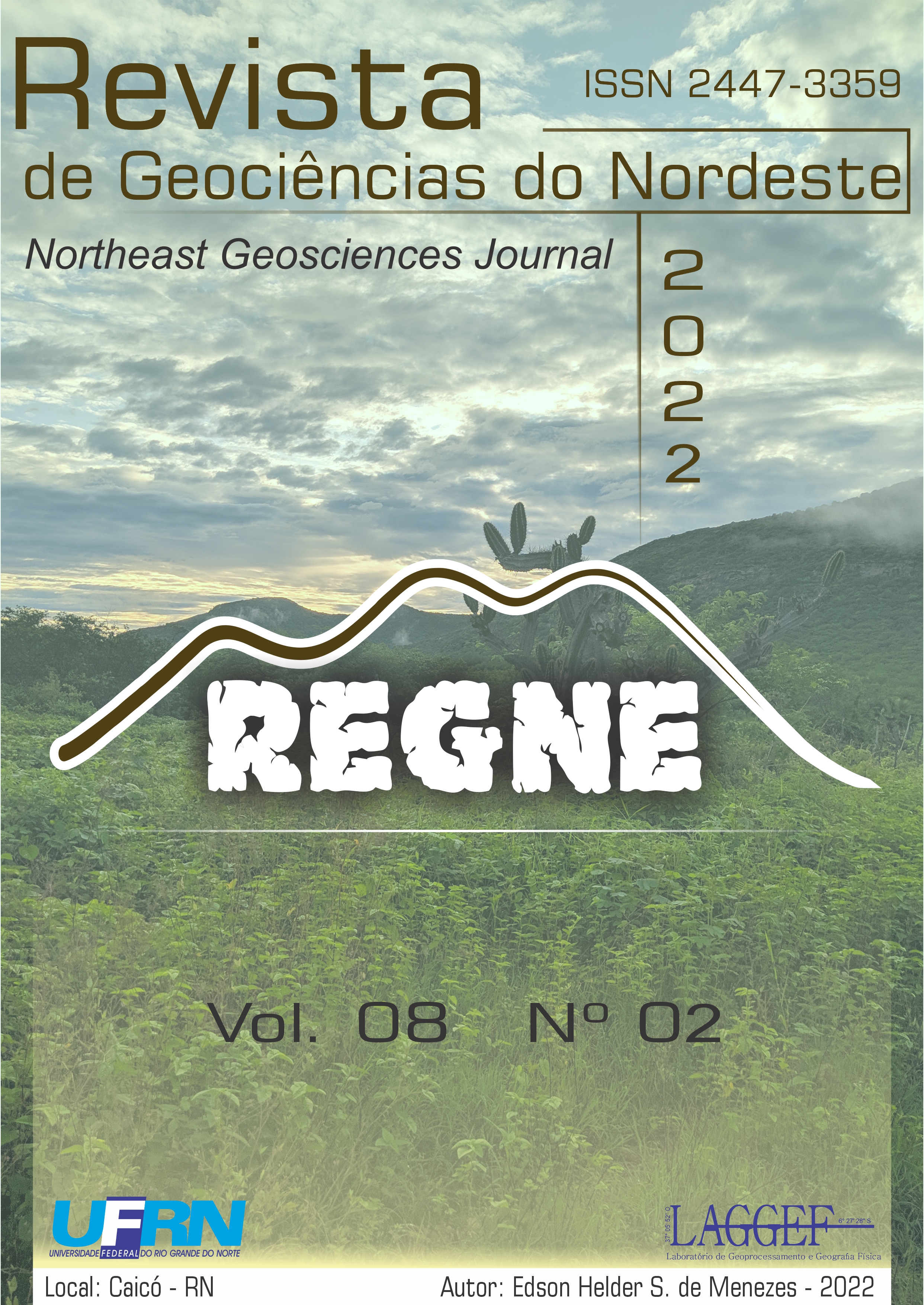PROCYONIDAE (CARNIVORA) IN A CAVE IN THE PARQUE NACIONAL DE UBAJARA, NORTHEAST OF BRAZIL (EOHOLOCENE)
DOI:
https://doi.org/10.21680/2447-3359.2022v8n2ID26473Abstract
The most recent procyonids of Brazil came from North America at the end of the Pleistocene. This work presents and describes the first carnivore record (Procyonidae Gray, 1825) found in a cave deposit and collected from dated sediments in northeastern Brazil. The collection was made during an excavation mission at the Gruta do Urso Fóssil, Parque Nacional de Ubajara, State of Ceará. The studied material was found at a depth of 0.8 m. Using the Thermoluminescence and Optically Stimulated Luminescence methods, the material was dated to ± 8,450 years BP. The animal is represented by a maxilla fragment with a complete right M2 and can be attributed to Procyon cancrivorus (Cuvier, 1798). The presence of this species in this area suggests that the environmental dynamics of the region has been harmonious and conserved for, at least, the last 8,000 years.
Downloads
Published
How to Cite
Issue
Section
License
Copyright (c) 2022 Revista de Geociências do Nordeste

This work is licensed under a Creative Commons Attribution 4.0 International License.


 Português (Brasil)
Português (Brasil) English
English







